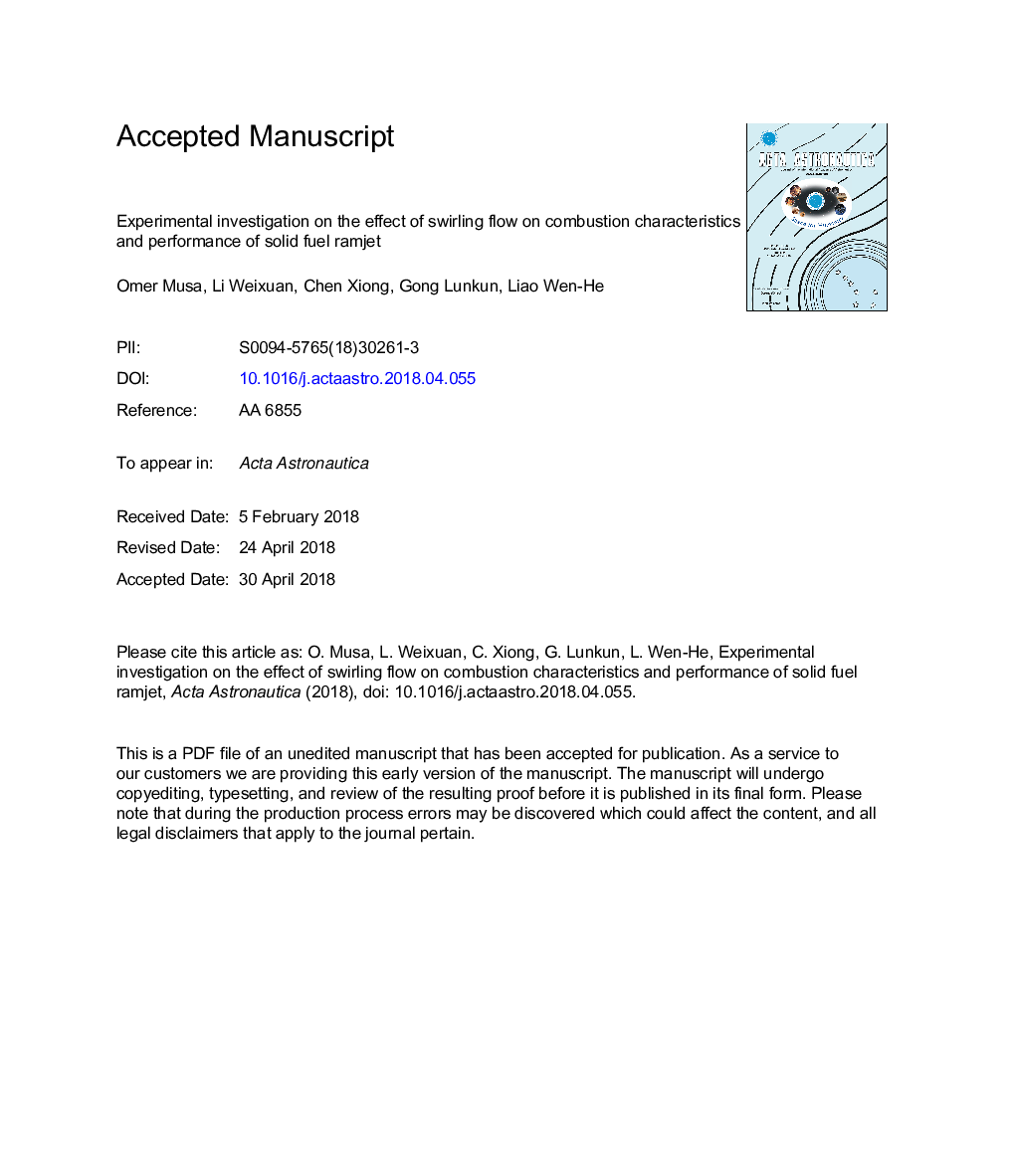| Article ID | Journal | Published Year | Pages | File Type |
|---|---|---|---|---|
| 8055497 | Acta Astronautica | 2018 | 29 Pages |
Abstract
Solid-fuel ramjet converts thermal energy of combustion products to a forward thrust without using any moving parts. Normally, it uses air intake system to compress the incoming air without swirler. A new design of swirler has been proposed and used in the current work. In this paper, a series of firing tests have been carried out to investigate the impact of using swirl flow on regression rate, combustion characteristics, and performance of solid-fuel ramjet engines. The influences of swirl intensity, solid fuel port diameter, and combustor length were studied and varied independently. A new technique for determining the time and space averaged regression rate of high-density polyethylene solid fuel surface after experiments has been proposed based on the laser scan technique. A code has been developed to reconstruct the data from the scanner and then used to obtain the three-dimensional distribution of the regression rate. It is shown that increasing swirl number increases regression rate, thrust, and characteristic velocity, and, decreases air-fuel ratio, corner recirculation zone length, and specific impulse. Using swirl flow enhances the flame stability meanwhile negatively affected on ignition process and specific impulse. Although a significant reduction of combustion chamber length can be achieved when swirl flow is used. Power fitting correlation for average regression rate was developed taking into account the influence of swirl number. Furthermore, varying port diameter and combustor length were found to have influences on regression rate, combustion characteristics and performance of solid-fuel ramjet.
Related Topics
Physical Sciences and Engineering
Engineering
Aerospace Engineering
Authors
Omer Musa, Li Weixuan, Chen Xiong, Gong Lunkun, Liao Wenhe,
